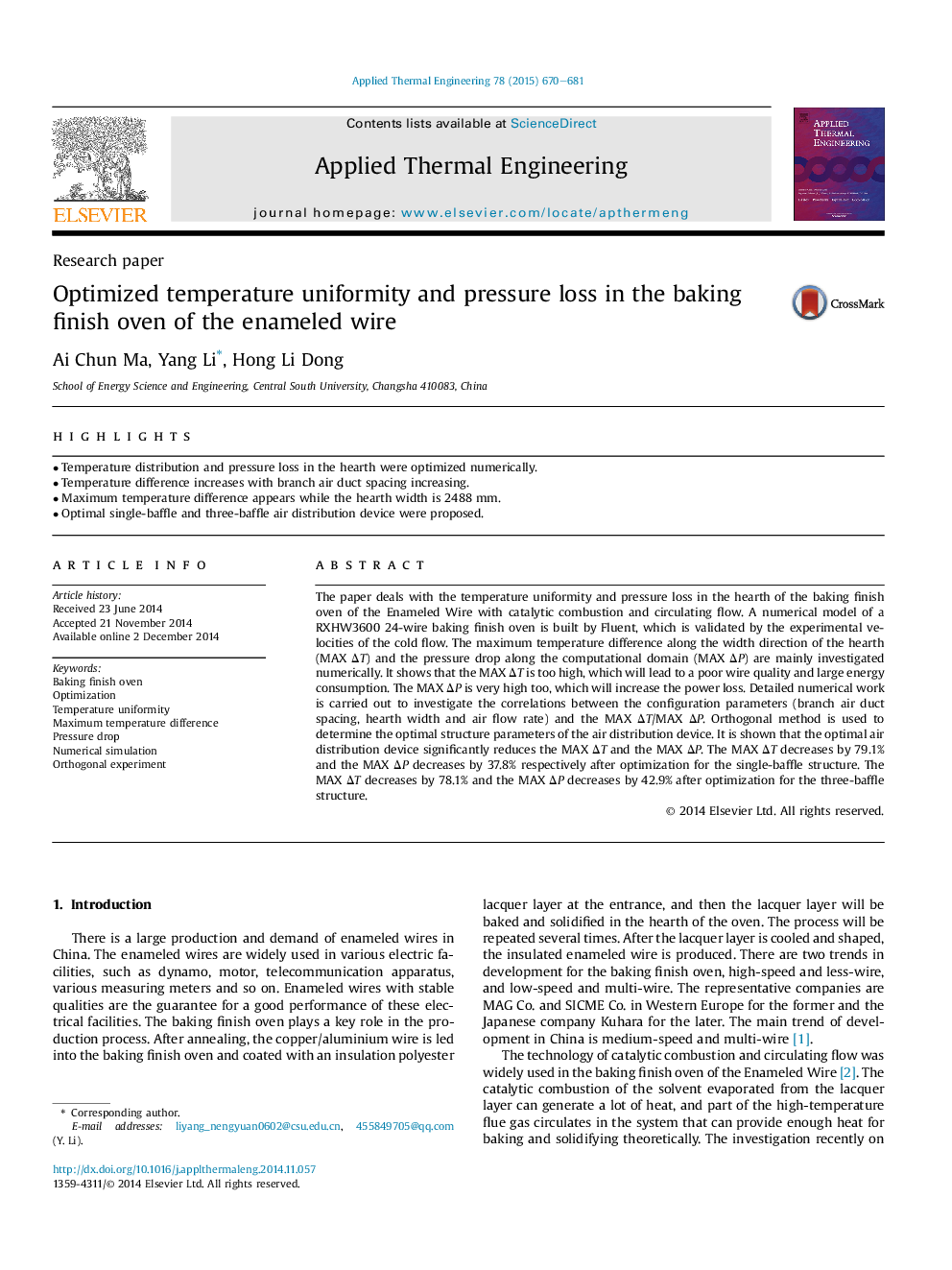| Article ID | Journal | Published Year | Pages | File Type |
|---|---|---|---|---|
| 7049011 | Applied Thermal Engineering | 2015 | 12 Pages |
Abstract
The paper deals with the temperature uniformity and pressure loss in the hearth of the baking finish oven of the Enameled Wire with catalytic combustion and circulating flow. A numerical model of a RXHW3600 24-wire baking finish oven is built by Fluent, which is validated by the experimental velocities of the cold flow. The maximum temperature difference along the width direction of the hearth (MAX ÎT) and the pressure drop along the computational domain (MAX ÎP) are mainly investigated numerically. It shows that the MAX ÎT is too high, which will lead to a poor wire quality and large energy consumption. The MAX ÎP is very high too, which will increase the power loss. Detailed numerical work is carried out to investigate the correlations between the configuration parameters (branch air duct spacing, hearth width and air flow rate) and the MAX ÎT/MAX ÎP. Orthogonal method is used to determine the optimal structure parameters of the air distribution device. It is shown that the optimal air distribution device significantly reduces the MAX ÎT and the MAX ÎP. The MAX ÎT decreases by 79.1% and the MAX ÎP decreases by 37.8% respectively after optimization for the single-baffle structure. The MAX ÎT decreases by 78.1% and the MAX ÎP decreases by 42.9% after optimization for the three-baffle structure.
Keywords
Related Topics
Physical Sciences and Engineering
Chemical Engineering
Fluid Flow and Transfer Processes
Authors
Ai Chun Ma, Yang Li, Hong Li Dong,
